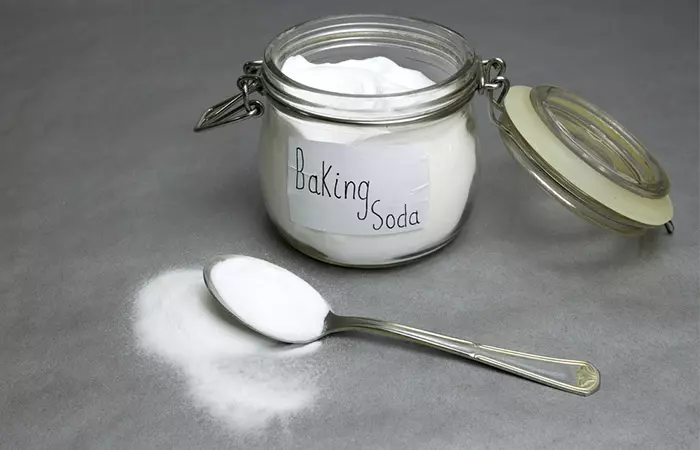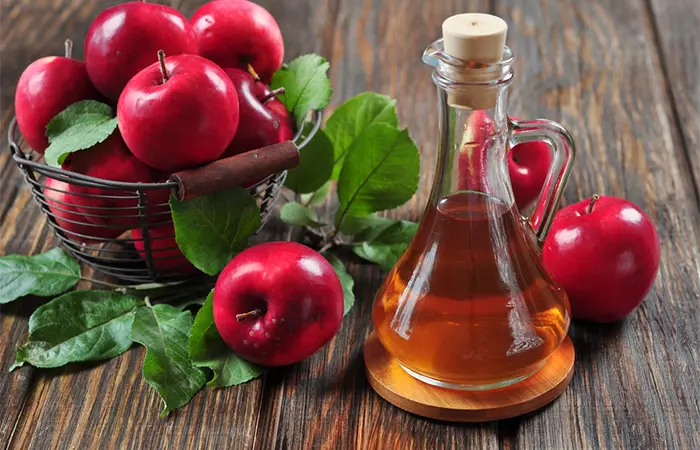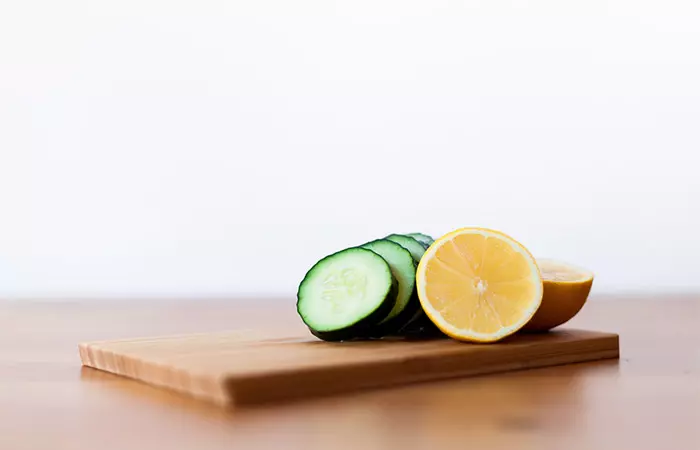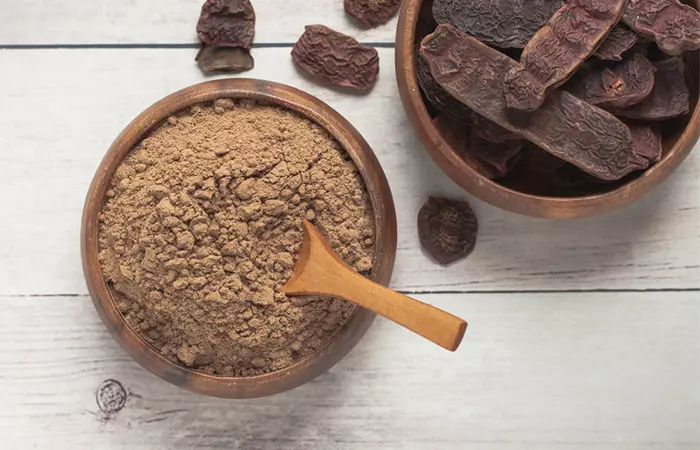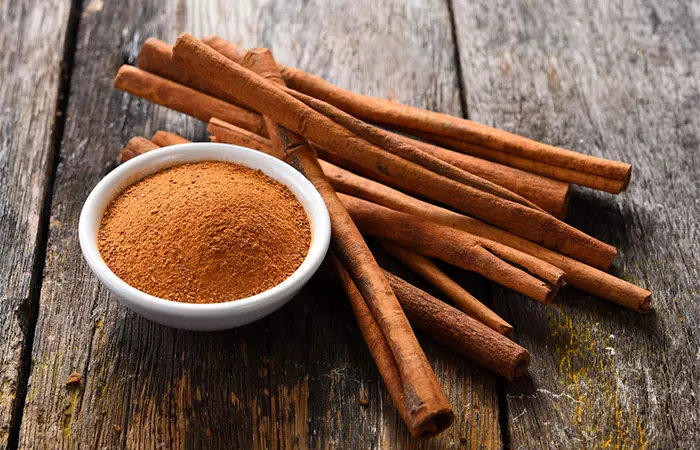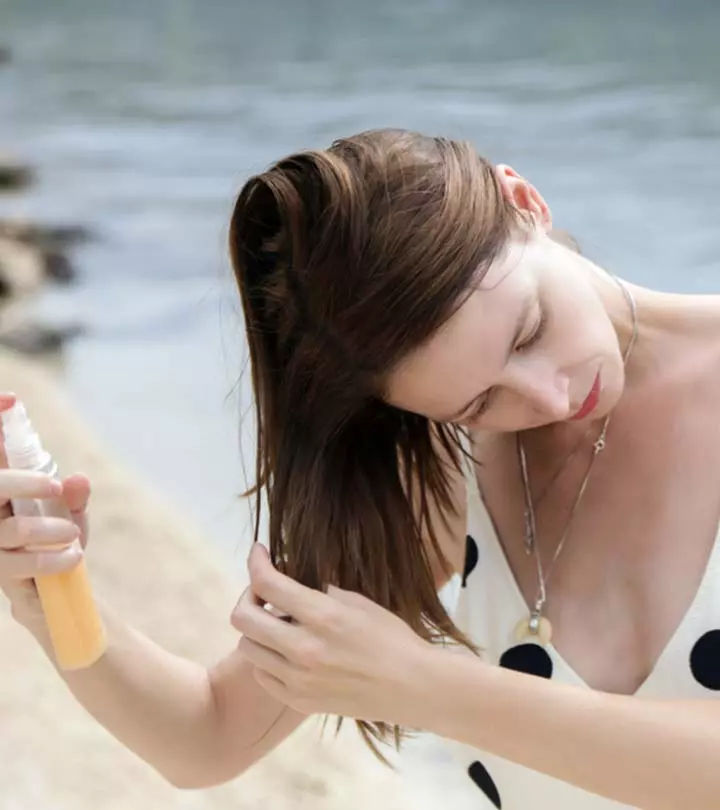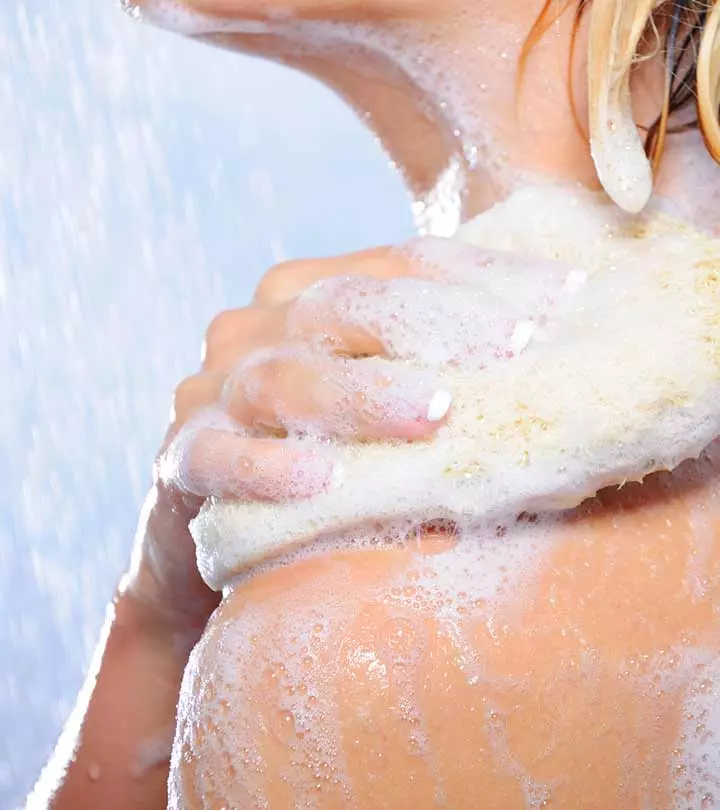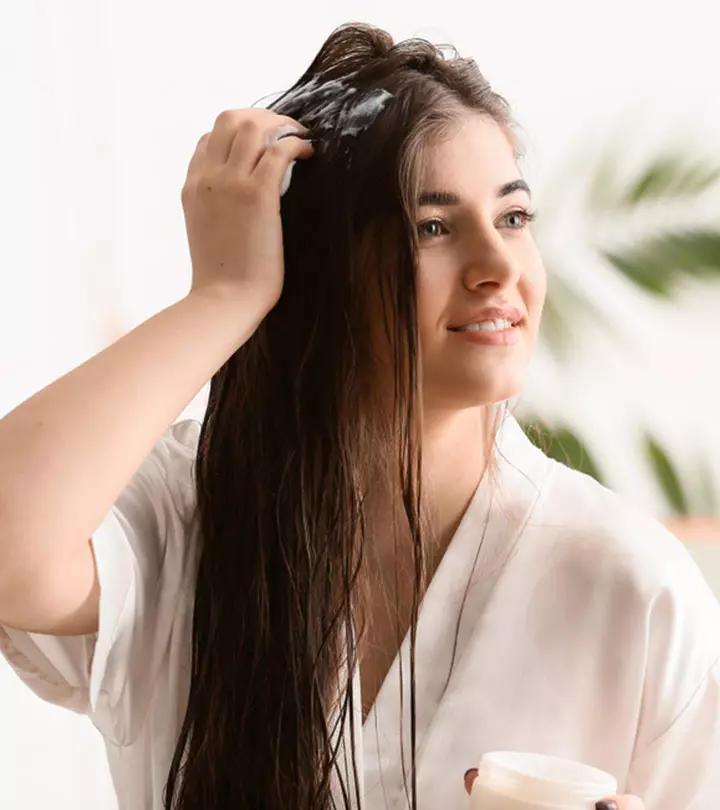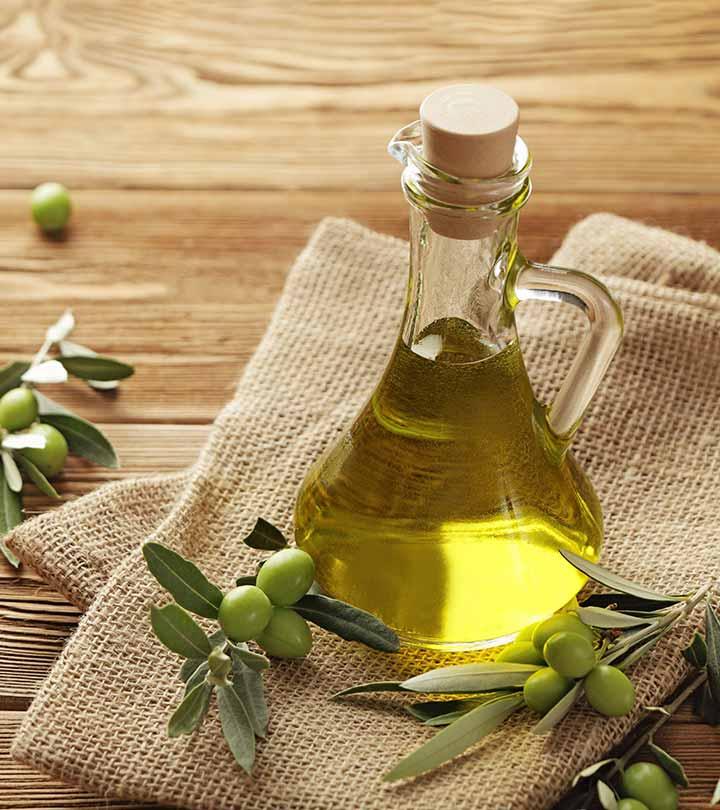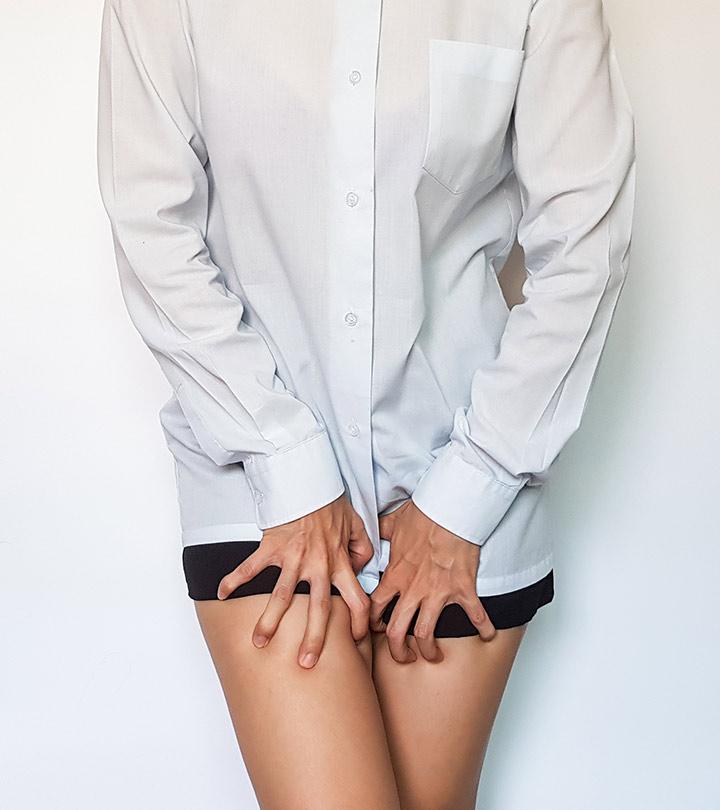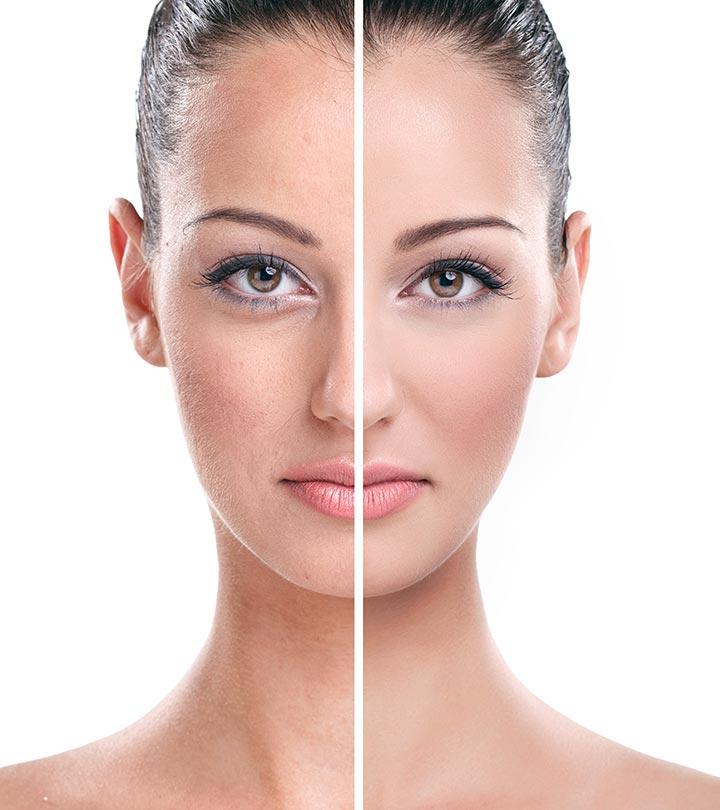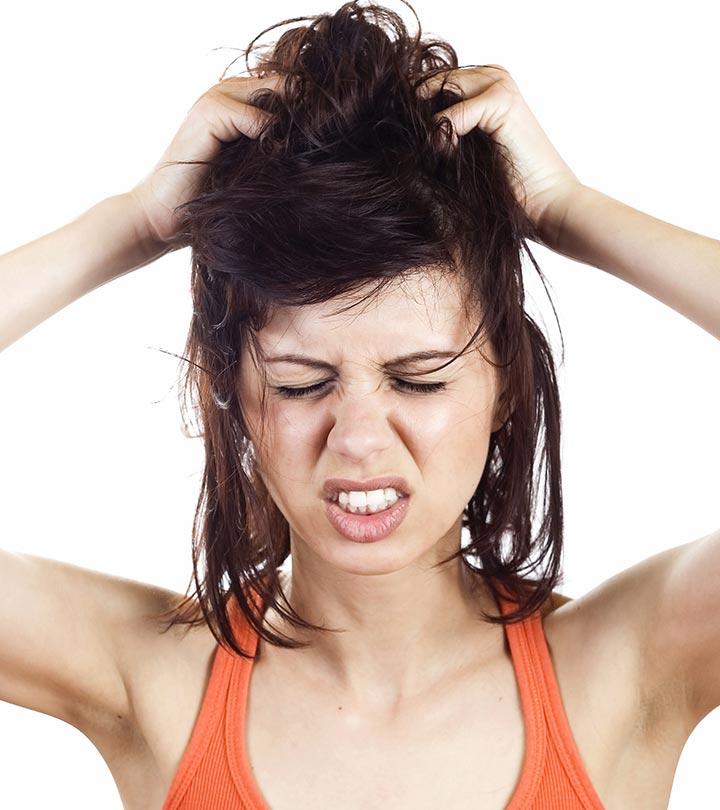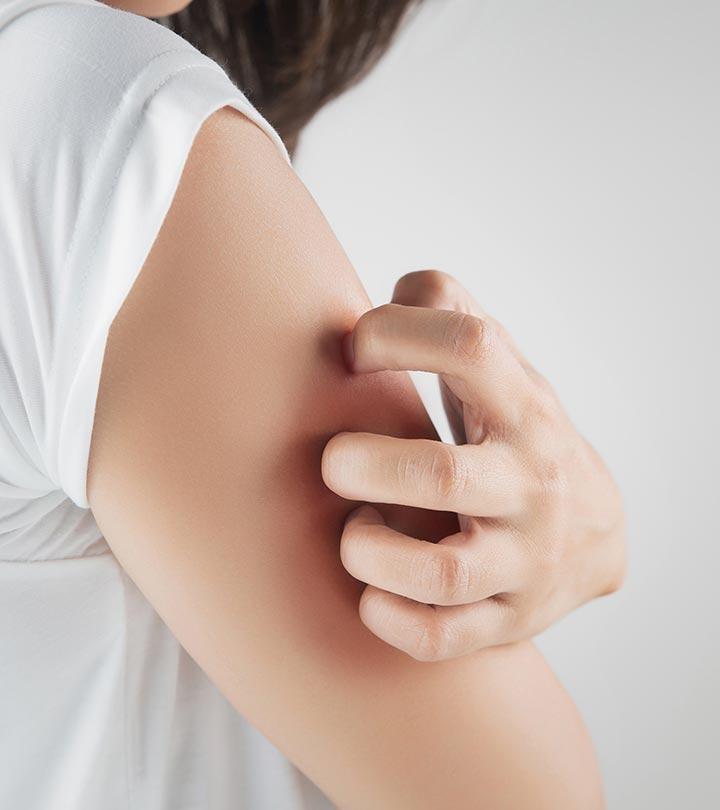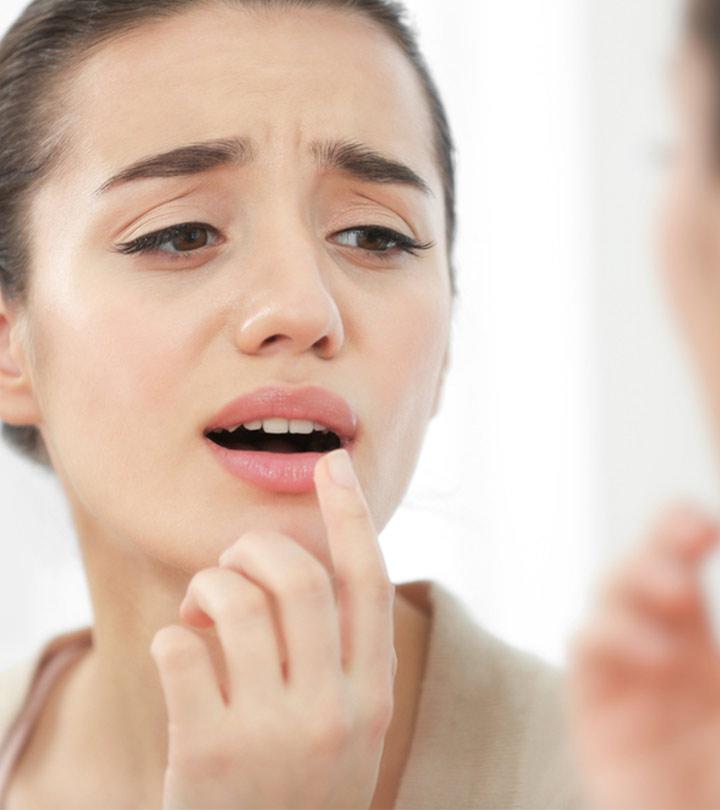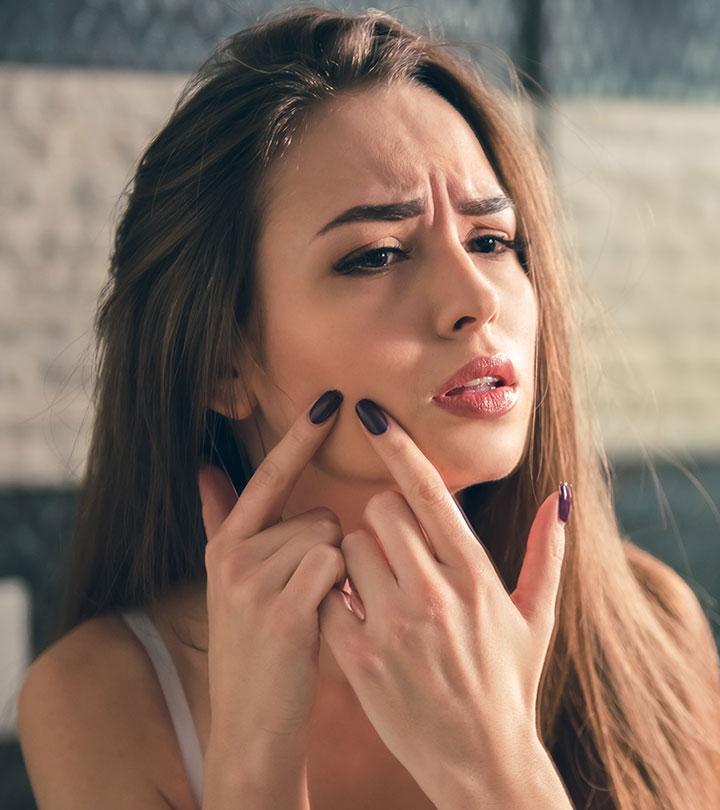10 Simple Home Remedies To Detox Your Hair
Easy-to-follow DIY recipes that deeply cleanse and nourish your lovely mane.
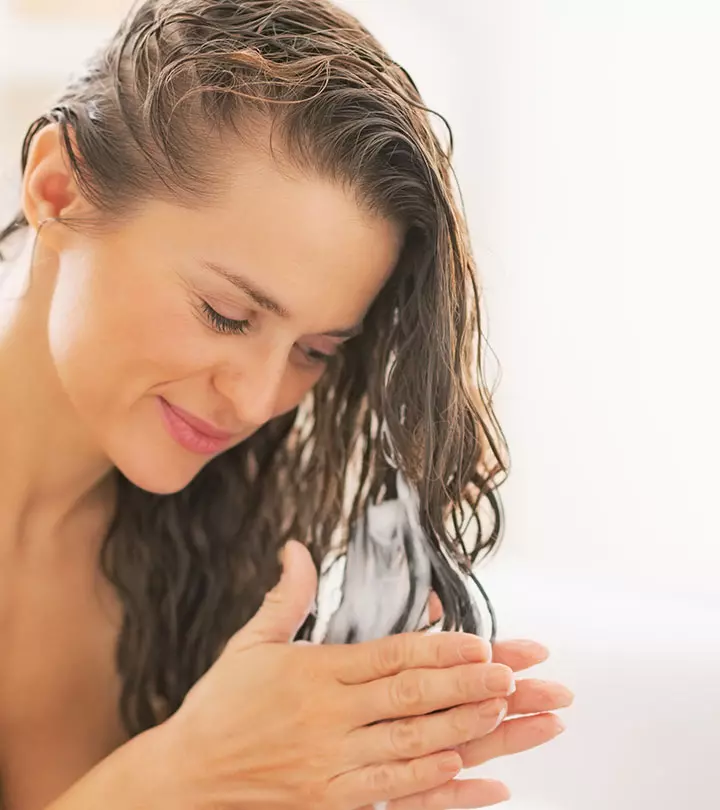
Image: Shutterstock
You can cleanse your hair and scalp with simple hair detox. It helps to eliminate toxins and harmful residues. However, if you wonder how to remove toxins from your hair, what the process looks like, and if it is similar to body detox, this article will guide you. Regular hair detoxification has multiple benefits. Read this article to learn the benefits of a hair detox and how to perform one.
In This Article
What Is Hair Detox?
Hair detox involves cleansing your hair deeply with a readymade detox shampoo or natural remedies. It helps remove dirt, grime, and product build-up. This layer of gunk, if not removed, can keep your hair from receiving the benefits of an extensive hair care routine. A hair detox also makes your hair and scalp ready for other hair care treatments.
Keep reading to further understand why you should detox your hair.
Why Should You Detox Your Hair?
As discussed, use of hair care products may lead to the build-up of dirt and oils in your hair. This may lead to hair thinning and hair loss and may also cause your hair to smell. Detoxifying your hair can help minimize these effects. It also may have these other benefits:
- May help reduce dandruff and itchiness by cleaning the scalp.
- May boost absorption of hair care products, like oils, shampoos, conditioners, and hair packs.
- May promote healthy hair growth by removing the gunk and toxin build-up, as these may hinder the effective absorption of nutrients from hair care products/treatments.
This is how a hair detox can benefit your hair if followed in your regular beauty routine. But how do you do a detox? The following recipes can help.
Hair Detox Recipes For Better Hair Health
1. Bentonite Clay And Aloe
You Will Need
- ½ cup of bentonite clay powder
- ½ cup of pure aloe vera gel
- 4 tablespoons of regular apple cider vinegar
- 250 mL of diluted apple cider vinegar
Instructions
- Mix the bentonite clay, aloe gel, and the regular ACV until you get a smooth paste.
- Apply the mixture to your scalp and hair.
- Wear a shower cap and wait for 20-30 minutes. Ensure the mask is not drying up. Spray some water with a spray bottle if required.
- Rinse the pack with the diluted apple cider vinegar.
- Wait for 2-3 minutes and wash your hair with a mild shampoo and conditioner.
Benefits
Bentonite clay is used in many therapeutic applications for its detox and antibacterial properties (1), (2). It may slow down the growth of any harmful bacteria on the scalp. However, more scientific research is warranted in this regard.
How Often?
Once in two weeks
 Quick Tip
Quick Tip2. Baking Soda
You Will Need
- ½ cup of baking soda
- 3 cups of hot water
Instructions
- Mix the baking soda in hot water and keep the mixture aside.
- Rinse your hair until completely wet.
- Pour the baking soda and water mixture through your hair.
- Work it in well and massage your scalp for a couple of minutes.
- Rinse it out and condition it to seal the detox.
- Optionally, you can use raw honey to condition your hair.
Benefits
The warm water may lift your cuticles and allow some deep cleaning action. Anecdotal evidence suggests that baking soda can remove oil build-up and dandruff.
How Often?
Once a week
Caution: Do a patch test before you try this remedy. Baking soda may cause scalp irritation.
3. Apple Cider Vinegar
You Will Need
- ¼ cup of apple cider vinegar
- 2 cups of water
Instructions
- Dilute the apple cider vinegar with two cups of water.
- Shampoo and condition your hair as usual.
- Pour the diluted ACV through your hair and rinse it off.
Benefits
Anecdotal evidence suggests that apple cider vinegar is a mild cleanser. It may help purify your hair. Diluted ACV ensures you do not develop any reaction to the otherwise acidic nature of concentrated ACV.
Rabadger, a blogger, recounted her experience of detoxing her hair with apple cider vinegar to balance her scalp and get rid of any build-up due to hard water. She said, “Really nice results, since it’s a chemical change you don’t need much at all (i).”
How Often?
Once a week
4. Sea Salt Clarifying Shampoo
You Will Need
- 2 parts coarse sea salt
- 1 part shampoo
Instructions
- Mix the sea salt and shampoo to create your own sea salt clarifying shampoo.
- Work it into your hair until you get good lather.
- Rinse your hair with cool water.
Benefits
Sea salt is an effective exfoliant. It also improves skin hydration and helps refresh the skin and hair (3). This exfoliating salt and shampoo mix may help reduce dead skin cells and cleanses your hair.
How Often?
Once a month
5. Honey Shampoo
You Will Need
- 1 tablespoon of raw honey
- 3 tablespoons of filtered water
Instructions
- Add the honey to the water and mix until well combined.
- Wet your hair and work the mixture in.
- Concentrate on your scalp and work your way down to the tips of hair.
- Rinse with cool/lukewarm water.
- Optionally, you can wash the honey shampoo with an ACV rinse.
Benefits
Honey is a humectant that keeps your hair soft and moisturized (4). It may also help cleanse hair deeply and promote detoxification. However, more research is warranted in this regard.
How Often?
Once or twice a week
6. Coconut Milk Shampoo
You Will Need
- ¼ cup of coconut milk
- ¼ cup of castile soap
- 2 capsules of vitamin E oil
- 15-20 drops of a fragrant essential oil (optional)
Instructions
- Mix the ingredients and store them in a shampoo or a pump bottle.
- Wet your hair and work the mixture in as you would with your regular shampoo.
- Concentrate on the scalp and work your way down to the tips.
- Rinse as usual.
Benefits
The castile soap exhibits an antimicrobial action (5). The essential oils used are also antimicrobial in nature (6). This shampoo may detox your hair deeply by reducing any infectious microbes on the scalp.
Essential oils are packed with beneficial, volatile plant secondary metabolites that may help fight off infections and harmful microbes. A study found that tea tree, rosemary, and thyme essential oils are highly effective against Staphylococcus aureus. This bacteria, commonly known as staph, is associated with several infections. For further information, see the graph below.
Antibacterial Activity Of Essential Oils Against Staphylococcus aureus
Source: Antimicrobial activity of the volatile substances from essential oilsHow Often?
Once or twice a week
7. Cucumber And Lemon
You Will Need
- 1 large lemon
- 1 medium-sized cucumber
- Essential oil (optional)
Instructions
- Peel the cucumber and lemon and chop them into small pieces.
- Blend the ingredients with the essential oil of your choice.
- Use this mix as a regular shampoo.
- Rinse as usual.
Benefits
Lemon is a rich source of citric acid (7). Anecdotal evidence suggests that citric acid may clarify your scalp. The cucumber in this recipe may soothe your scalp.
How Often?
Once or twice a week
8. Shikakai
You Will Need
- 2 tablespoons of shikakai powder
- Water
Instructions
- Add enough water to the shikakai powder to form a paste.
- Wet your hair and work the shikakai paste through it, concentrating on your scalp.
- Massage your scalp for 2 minutes and work the paste down the length of your hair.
- Rinse with cool water.
Benefits
Shikakai can relieve scalp scaling, itching, dryness, and greasiness (8). It may help cleanse your scalp if used regularly.
How Often?
Once or twice a week
 Trivia
Trivia9. Cinnamon Detox Mask
You Will Need
- ½ teaspoon of cinnamon
- 1 teaspoon of baking soda
- 2 tablespoons of olive oil
Instructions
- Combine the ingredients in a bowl and mix until you get a smooth consistency.
- Massage the mixture into your scalp and work it through your hair in sections.
- Leave it in for 20 minutes and rinse your hair.
Benefits
Cinnamon exhibits antifungal properties. It can effectively slow down the growth of Malassezia, a fungus that causes dandruff (9).
How Often?
Once a week
10. Coconut Milk And Aloe Shampoo
You Will Need
- 1 can of coconut milk
- ¾ cup of pure aloe vera gel
- Essential oil (optional)
Instructions
- Whisk the ingredients in a bowl until you get a smooth paste.
- Pour the mixture into an ice-cube tray and freeze.
- Pop a cube out and place it in a bowl in the refrigerator the night before you plan to use it.
- Wet your hair the next morning and work the mixture into your scalp and hair.
- Massage and rinse as usual.
Benefits
Coconut oil promotes hair strength by reducing protein loss (10). It also may cleanse hair, though more research is warranted in this regard.
How Often?
Once a week
In addition to the remedies list above, you may also include certain foods in your diet that are believed to detoxify your hair and scalp.
Foods That May Help Detox Your Hair
Topical applications can generate visible results if followed regularly. However, detoxifying your body promotes overall hair health too. Anecdotal evidence suggests that the following foods can help.
- Cucumber
- Ginger
- Lemon
- Mint
- Watermelon
- Oranges
- Curry leaves
- Leafy vegetables
- Avocados
- Lean protein-rich foods
Additionally, hydration keeps the skin and scalp from drying. Maintain optimum hydration levels in the body by taking adequate amounts of fluids, including water.
Detoxing can remove impurities and prep your scalp for other hair treatments. But can it also result in hair loss? Scroll down to find out.
Can Detoxing Cause Hair Loss?
Detoxing your hair with natural home remedies is a safe way to remove impurities and product buildup. This process does not typically lead to hair loss. However, anecdotal evidence suggests that excessive use of harsh ingredients like sea salt, lemon juice, and baking soda may cause dryness and damage.
The remedies mentioned above can effectively clarify your hair without harm. However, follow up these treatments with proper conditioning and hydration to keep your hair healthy. If you experience excessive dryness or breakage, adjust your approach and consult a professional stylist for personalized guidance.
Infographic: Easy Home Remedies To Detox Hair
Your hair needs regular detox to get rid of dirt and product buildup. There are several home remedies to detox your hair. But not everyone will have free time to try out these home remedies. Therefore, check out the infographic below to learn the easiest and less time-consuming detox method for your hair. Illustration: StyleCraze Design Team
Overindulging in hair care products may lead to more harm than good. In such cases, we recommend you detox your hair to rejuvenate it. Your tresses and scalp accumulate dust, grime, oil, and product buildup that need to be dealt with effectively. If not addressed properly, it may lead to dandruff or interfere with the hair products you use. Follow our simple hair detox recipes to revitalize your hair, smoothen them, and cleanse your hair and scalp thoroughly. These remedies are effective as they use natural ingredients that have a clarifying effect. Follow a healthy balanced diet as well for maximum results.
Frequently Asked Questions
When should you detox your hair?
Detox your hair once a week if you have oily hair or use styling products consistently. If you have dry hair, detox it once every two weeks.
What is the 30-day hair detox?
The 30-day hair detox is a challenge that aims to remove gunk from your hair by not using any oils or styling products on your hair for 30 days.
Can hair detoxification remove hair dye?
No, natural detox remedies do not help remove the hair dye. It simply nourishes the strands without affecting the hair shaft and cuticles.
Key Takeaways
- Hair detox helps clean the scalp, promotes hair growth, and improves the absorption of hair care products.
- Using sea salt is an effective way to remove dead skin cells from your scalp.
- A cinnamon detox mask can help treat dandruff naturally.
- You can consume foods like cucumber, ginger, watermelon, and leafy vegetables to improve the overall health of your hair.
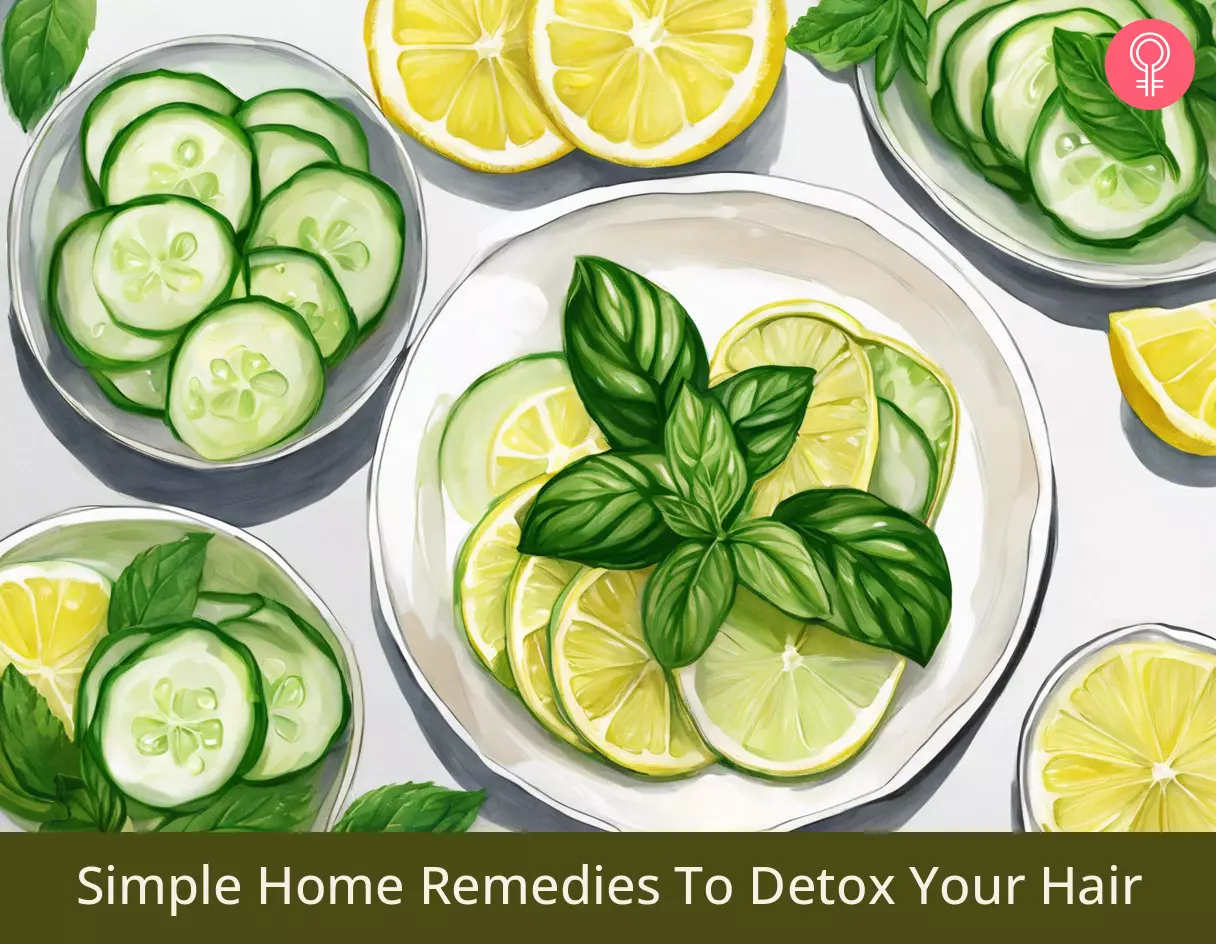
Image: Stable Diffusion/StyleCraze Design Team
Give your hair a detox at home with this effective DIY hair rinse. Unlock the secret to gorgeous, strong, and healthy locks from this video.
Personal Experience: Source
StyleCraze's articles are interwoven with authentic personal narratives that provide depth and resonance to our content. Below are the sources of the personal accounts referenced in this article.
i. 7 years without shampoo, some experiences and questionshttps://no-poo.livejournal.com/657347.html
References
Articles on StyleCraze are backed by verified information from peer-reviewed and academic research papers, reputed organizations, research institutions, and medical associations to ensure accuracy and relevance. Read our editorial policy to learn more.
- Bentonite Clays for Therapeutic Purposes and Biomaterial Design
https://pubmed.ncbi.nlm.nih.gov/32013819/ - .Bentonite, Bandaids, and Borborygmi
https://www.ncbi.nlm.nih.gov/pmc/articles/PMC2895274/ - Bathing in a magnesium-rich Dead Sea salt solution improves skin barrier function, enhances skin hydration, and reduces inflammation in atopic dry skin
https://pubmed.ncbi.nlm.nih.gov/15689218/ - Honey in dermatology and skin care: a review
https://pubmed.ncbi.nlm.nih.gov/24305429/ - Comparison of castile soap, benzalkonium chloride, and bacitracin as irrigation solutions for complex contaminated orthopaedic wounds
https://pubmed.ncbi.nlm.nih.gov/10406699/ - Comparison of antimicrobial activities of natural essential oils and synthetic fragrances against selected environmental pathogens
https://www.ncbi.nlm.nih.gov/pmc/articles/PMC5805554/ - Quantitative Assessment of Citric Acid in Lemon Juice, Lime Juice, and Commercially-Available Fruit Juice Products
https://www.ncbi.nlm.nih.gov/pmc/articles/PMC2637791/ - A CLINICAL STUDY ON EFFICACY OF SIYAKKAI (ACACIA CONCINNA) HAIR WASH ON DARUNAKA (PITIRIASIS CAPITIS)
https://www.researchgate.net/publication/322489340_A_CLINICAL_STUDY_ON_EFFICACY_OF_SIYAKKAI_ACACIA_CONCINNA_HAIR_WASH_ON_DARUNAKA_PITIRIASIS_CAPITIS - Chemical characterisation and antifungal activity of methanolic extract of Cinnamomum verum J. Presl bark against Malassezia spp.
https://www.sciencedirect.com/science/article/abs/pii/S0975357513000679 - Hair Cosmetics: An Overview
https://www.ncbi.nlm.nih.gov/labs/pmc/articles/PMC4387693/
Read full bio of Tiffany Young
- Tiffany Young is a certified trichology practitioner with 6 years of experience and the CEO and founder of ThinHairThick. She has a master's degree in business from the University of Utah and earned a certificate in Trichology. She writes for notable publications that are distributed worldwide.
 Tiffany Young is a certified trichology practitioner with 6 years of experience and the CEO and founder of ThinHairThick. She has a master's degree in business from the University of Utah and earned a certificate in Trichology. She writes for notable publications that are distributed worldwide.
Tiffany Young is a certified trichology practitioner with 6 years of experience and the CEO and founder of ThinHairThick. She has a master's degree in business from the University of Utah and earned a certificate in Trichology. She writes for notable publications that are distributed worldwide.
Read full bio of Ramona Sinha
Read full bio of Swathi E





